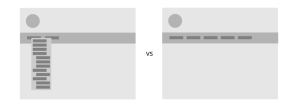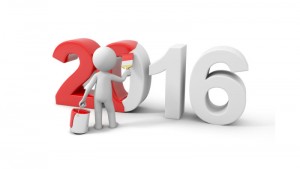2015 was a jam-packed year filled with some really exciting developments in reaching our audience through digital ads.

Looking ahead, our friends at Acquisio gathered some pros in the industry to chat about predictions in paid search for 2016, and there’s some great stuff to look forward to. Let’s dive into some of the most interesting projections from the crew!
Ad Targeting in 2016 Will Be Awesome
The ways we can reach our audience get more awesome every year. When I first started advertising online, the ways in which we can target our audiences today would have been literally unthinkable. Now, we can target potential customers according to virtually any metric, demographic, or behavior, and many predict 2016 will help advertisers be über-relevant beyond keywords alone.
“Consumers want—and respond to—advertising that is customized to their interests,” says Lisa Raehsler. “Advertisers who evolve to strategies such as in-market audiences, retargeting and demographic targeting will see positive performance results.”
Greg Sterling predicts a move in the right direction as offline action and sales data will better integrate into audience segmentation and online/mobile ad targeting in the coming year. This will lead to more offline-to-online retargeting, he says.
John Gagnon predicts that 2016 will see better retargeting, too, like reaching those “you’ve engaged with at tradeshows (pixel on an event registration page)” and reengaging “folks who’ve signed up for a whitepaper (customer email list).”
I agree. Advances in PPC marketing such as customer match in AdWords and custom audiences in Facebook make PPC look and feel a lot more like email marketing. As a result, PPC marketers should prepare for 2016 ad campaigns to look and feel more like what you might expect to see in a marketing automation drip campaign.

Finally, Brad Geddes suspects enterprise companies may start questioning if their agency is the best fit for them in the coming year based on how they adopt to customer journey marketing.
No More CPC WTF?
You may be wondering, what is the future of the cost per click? (SPOILER ALERT: They’re going UP).
Lisa Raehsler points out that while search has been a “dependable stand-by,” rising CPCs are making it too difficult for small and medium-sized advertisers to rely solely on traditional keyword search and compete with the “big guys.”
But Aaron Levy points out that “given the marketplace economy and its impending saturation, I expect these rises are going to slow lest engines price their own advertisers out of the marketplace.”
Bryan Minor agrees, suspecting there will be an “overall downward suppression of CPC” due to increased efficiency in the marketplace from machine learning.
Unfortunately, as much as I’d like to see CPCs go down, I’m pretty sure CPCs will continue to rise in 2016 and beyond.
“When competing in a world of higher CPCs, it’s more important than ever to understand the full value of search ads in order to be able to set competitive bids,” says Frederick Vallaeys, who expects Google to make it easier to understand the full value with enhancements to conversion tracking and attribution modeling.
This, Vallaeys says, will make it easier for every advertiser to decide just “how much value should be assigned to each type of interaction whether they be calls, offline sales, requests for directions, etc.”
Greg Sterling concurs that “vague digital metrics such as clicks and impressions” will give way to more tangible outcomes like store visits, offline sales and “other concrete actions more reflective of actual customer activity and value.”
Mobile Advertising … Because Duh!
Mobile advertising is not really an option anymore – it’s required.

Let’s see what industry folks said is in store for mobile:
“The number of responsive sites, built-for-mobile sites and apps will flourish,” says David Szetela of Bruce Clay, Inc. Digital marketers should plan accordingly with things like click-to-call ads and shortening ad copy, he says.
Brad Geddes believes that the best companies will “start testing mobile ads and pages completely separately from their desktop ad and page tests.”
“We’ll also see considerably more ‘m-commerce,’” says Greg Sterling, which includes scheduling/bookings and payments for offline services as well as the more traditional e-commerce transactions.
Finally, Aaron Levy points out that store visit tracking “will grow exponentially to fully value mobile.”
Social Media Ads: Kicking Some Serious Ass
Social advertising is quickly becoming a favorite for many businesses.
In fact, Brad Geddes says 2016 will be the year of “Google trying to catch Facebook” in targeting users by more than just keywords.

Marc Poirier agrees. “The next battleground to challenge Google’s market share may very well be non-traditional search platforms. Facebook and Netflix, as an example, have shown that WHAT people search is as important as WHERE they search.”
David Szetela forecasts that advertisers will spend a growing percentage of their budgets on Facebook ads and Instagram. “They’ll be attracted by Facebook’s retargeting, custom audiences (especially email lists) and dynamic product ads.”
And Greg Sterling points out that “on the consumer side, Facebook will finally get into ‘local search.’”
“Consumers seek answers not only through search, but also through social media platforms like Facebook and LinkedIn,” Lisa Raehsler points out, “so exposure on these platforms is complementary to search engines.”
SMBs Rule!
On the SMB front, Frederick Vallaeys says local shops will see improvements to the Google Merchant Center where it will be easier to submit and manage small product feeds, and that AdWords “will make it easier to turn these feeds into Shopping ads.”
He also predicts AdWords will “integrate tools for retailers in Google My Business,” and that “Google Shopping Express will make it easier for small shops to start offering their inventory for sale on Google’s same-day delivery shopping service.”

Greg Sterling says that in terms of ad sales, “data will be more widely and effectively used to improve efficiency and reduce churn, in part by identifying and segmenting prospects based on their individual needs or challenges.”
And Frederick points out that “video ads are cheap compared with search ads, so they present a great opportunity for small businesses to connect with prospective buyers” in the coming year.
When it comes to tracking, Aaron Levy predicts view-based attribution and cross-device influence will grow exponentially. “No longer will they be relegated to a non-default column or hidden in the corner; instead, they’ll become core bidding functionality and must-use tools.”
He also thinks that signals to track in-store visits, which he points out are already in the works at Google, will help “measure what we can’t see with a pixel.”
Bye-Bye AdWords, Hello Bing Ads??
Several weighed in on the future of Bing Ads in the coming year – and it’s looking bright.
Marc Poirier predicts Google’s share of search in the U.S. as measured by comScore “will drop below 60 percent in 2016 as a result of Bing’s rapid growth following the acceleration of the deployment of Windows 10 with Bing globally.”

David Szetela says Bing Ads search and display traffic will finally be viewed as “must have” by a growing number of advertisers. “This will be driven by the fact that the increasing click inventory will continue to be priced below Google CPCs.”
Mona Elesseily points out that Bing Ads has also integrated search functionality into various Microsoft products like Xbox, Microsoft Office and Cortana, and is “attempting to understand search/user behavior from different platforms, different device types, etc.”
With all these fantastic developments on the horizon, we can’t wait to see what 2016 will bring to the paid search industry, and how it will allow businesses to better connect with their target audience at precisely the right moment.
You can download the predictions eBook in its entirety here.
Digital & Social Articles on Business 2 Community(56)
Report Post







